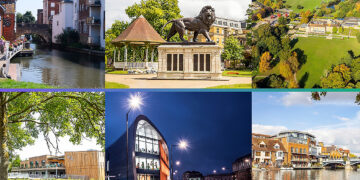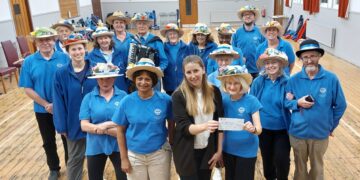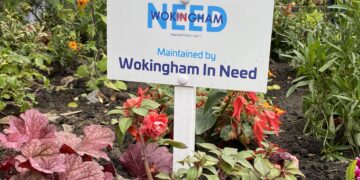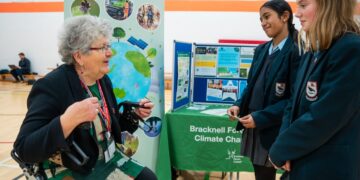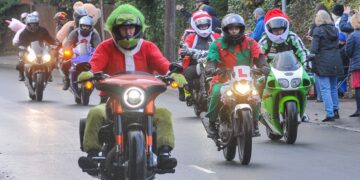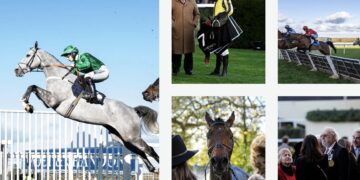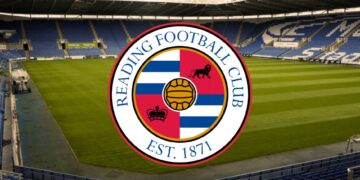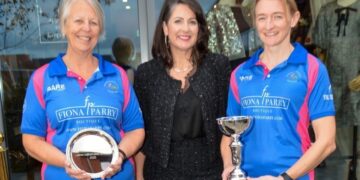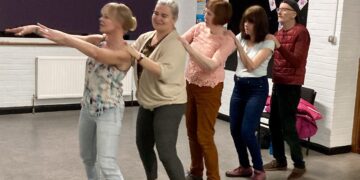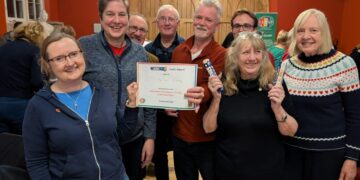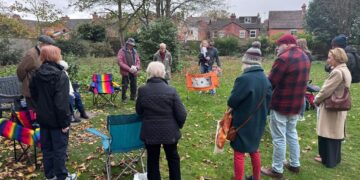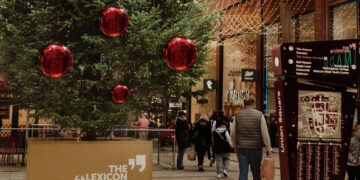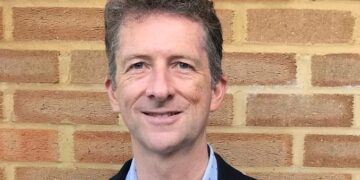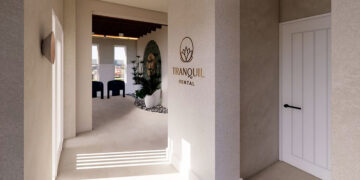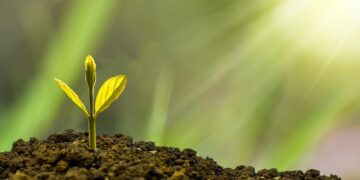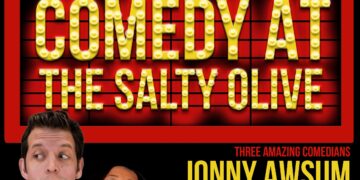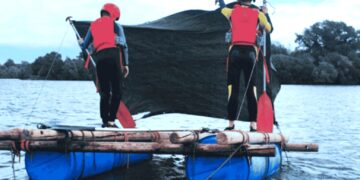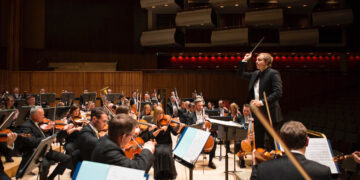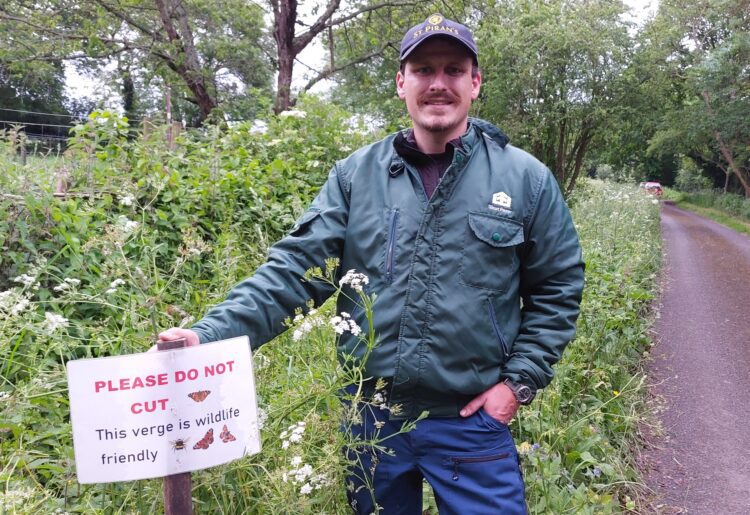A countryman put out signs pleading that a flowering verge in a country lane should not be cut.
Still in the No Mow May season, James Girdler, 32, of Poplar Lane, Hurst, later heard the unwelcome sound of a tractor and mower approaching.
He said: “I went out to say hello to the driver and asked if he could leave this part of the verge, on just one side of the road. I said I knew he was only doing his job. He did leave it and said he would have to log what had happened.
“It’s a shame the verges have to be cut at all, especially during the growing season and No Mow May.”
But, if they did cut, doing one side would make more sense and help health and safety. “And essentially they’d be saving half of the verges for wildlife, spend half the time cutting and use half the diesel.
“They should cut early in the year, in February to encourage taller grasses to grow at the back, then final cuts should be in September – October,” he added.
James, who does grounds maintenance and gardening at St Piran’s School, Maidenhead, and also the old craft of hedgelaying, said the verges were an eco system and rich pickings for insects for nesting birds in his family’s garden.
He continued: “We have one or two wrens’ nests, two blue tits’ nests and a robin nest. The verges are great for insects including caterpillars and larvae. There are so many creatures there.
“The more patches for wildlife the better for the environment. We lose hundreds of miles of verges due to cutting. It takes a long time to grow back,” he said.
Where his family laid a hedge (shaping hedges to make them thicker) they earlier this year sowed wild flower seeds. James has raised his concerns with Wokingham Borough Council.
James said the verge’s plants include: cow parsley, buttercup, comfrey, purple dead nettle, white dead nettle, garlic mustard, borage, bush vetch, dandelion, rye grass, other grasses and knapweed.
Steve Brown, Wokingham Borough’s interim assistant director of environment and safety said: “Most grass areas are cut four times a year including most verges and small informal open spaces. Sightline issues impacting highway visibility are cut more frequently to ensure road safety. Our play areas, sports pitches and larger open spaces are cut more frequently to ensure they are accessible for use. Rural highway verges are cut twice a year with rural sightlines being cut four times a year.
“Our grass cutting regime allows smaller plants such as daisies and birds-foot-trefoil to flower, providing a food source for bees, butterflies and other invertebrates. In our larger open spaces where we have a more frequent cut such as football pitches, we will often have designated areas of long grass which is cut annually, providing food and shelter for wildlife.
“We are not able to participate in No Mow May, as our grass cutting cycle takes more than four weeks between cuts which makes pausing for a month not possible. However we try to allow areas to grow longer where it is safe and appropriate for this, and especially where residents put up signs asking for it. The works to cut back the overhanging trees on the bus route will be complete this week.”


